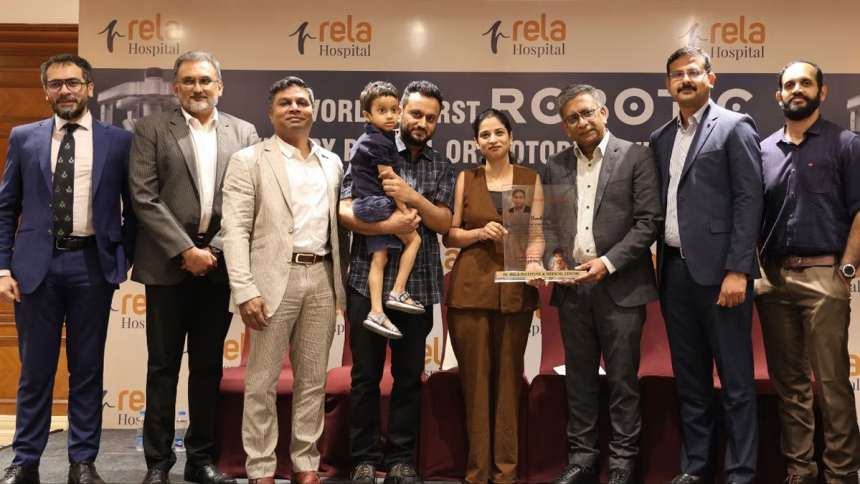World’s First and the youngest child to have Robotic liver transplant surgery (Recipient operation)
In a groundbreaking World’s first, Rela Hospital has successfully performed a Robotic Liver Transplant on the youngest recipient to date—a five-year-old child. This historic surgery marks a major milestone in the field of robotic and paediatric transplant surgery, combining cutting-edge technology with complex surgical expertise to deliver faster recovery and improved outcomes.
The patient, a five-year-old boy, was diagnosed with a rare genetic condition called Urea Cycle Defect, in which the liver cannot properly process proteins from food, leading to a harmful buildup of ammonia in the blood—a condition that can severely affect the brain. A liver transplant offered a definitive cure. The surgery proceeded smoothly without any complications, and the child was discharged within a week. In contrast, the conventional approach typically requires a hospital stay of 14 to 21 days.
Also Read : Saudi Child Receives Life-Saving Liver Transplant Using Robotic Surgery at KFSHRC
The fact that the robotic surgery was performed on a child makes this achievement even more significant, as pediatric bodies offer far less space than adults’, posing greater challenges for the insertion and maneuvering of robotic instruments. Remarkably, even the procedure to harvest a portion of the liver from a living donor was carried out using robotic assistance. The donor also had a brief hospital stay and was discharged within five days.
In his comments, Prof. Mohamed Rela, Chairman, Rela Hospital, said, that “this is the first time in the world Pediatric liver transplantation has been successfully performed completely using the Robotic Platform. This is a major milestone in the field of surgery itself. This is an extremely complex surgery with delicate microvascular anastomosis techniques. To add to the complexity the operation was also performed as an Auxiliary Liver Transplant which is the most technically complex of all liver transplant operations.
This advance in the field of liver transplantation not only offers rapid recovery with less pain but also helps with normal psycho-social development of these children during their teen years without a large scar in their abdomen.”
Dr. Rajesh Rajalingam, Clinical Lead – HPB Surgery and Senior Consultant, Abdominal Trauma, HPB Surgery and Liver Transplantation, Rela Hospital, commented “Doing liver transplant operation in a child adds another layer of difficulty because of the limited space available to maneuver robotic instruments. Additionally, the donor surgery was also performed using robotic technology, which is remarkable. Witnessing both mother and her son being discharged within a week after a successful transplant utilising the robotic platform of minimally invasive surgery, each bearing the same surgical scar, is a profound testament to the strength of familial bonds and the advancements of modern medicine””
In his remarks, Dr. Naresh Shanmugam, Director – Women and Child Health & Senior Consultant- Paediatric Gastroenterology & Hepatology, Rela Hospital, said, “Despite strict protein restriction and medication, the child experienced frequent, severe episodes requiring hospitalization. Liver transplantation became the only curative treatment. By performing this highly complex auxiliary liver transplant robotically, we have significantly reduced the hospital stay from the usual 14-21 days with open surgery down to just 7 days. The child was also able to return to a normal, unrestricted protein diet. Importantly, retaining a portion of the child’s native liver opens up future possibilities for targeted gene therapy as advancements continue. This success marks a promising step forward in treating metabolic liver diseases with minimally invasive techniques.”



















